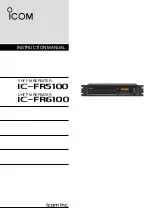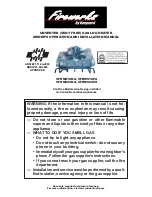
FORSAIRE COUNTERFLOW DIRECT VENT GAS WALL HEATER
45
control are tight. The ignition control unit and pilot burner must both be chassis
ground. If there is still no spark, the pilot and electrode assembly must be replaced.
BE SURE POWER IS “OFF” BEFORE PERFORMING THIS TEST!! Set test meter to
the “ohm” scale or use continuity checker. Touch one end of the probe to tip of
flame sensor, the other to the “SENSE” terminal on the ignition control unit. The
Ohmmeter should read “0”, continuity should be evident. If you don’t obtain a
reading, remove wiring from the sensor and test both individually. If continuity is
not evident, replace the wiring and/or sensor.
There should be NO continuity between sensor and “GND” terminal on the ignition
control unit. Test wiring and sensor individually, determine which is shorted on
ground. Replace or repair. Turn ON power.
See 2B.
See 1F.
See 4c.
See 4d.
When main burner comes ON, ensure that the pilot flame is strong, sensor is
properly aligned and pilot flame impinges the top 5/8 inch of the sensor. (See
procedures for checking for the proper pilot flame and alignment in problem 4d.)
If the pilot flame is drawn away from the sensor when the main burner comes
“ON” the cause could be that the manual valve is not in the full ON position. NOTE:
Low inlet gas pressure to the gas control valve can be caused by several problems
and is not within the scope of the procedures outlined in this service guide. Consult
your local utility or gas supplier.
See 6c.
Check the setting of the heat anticipator in the wall thermostat. Set it to the setting
specified on the gas control valve.
The system may be cycling on a faulty limit switch. Using a test meter set to the 110
volt scale, check for a voltage reading across the limit switch when the main burner
shuts OFF. If you get a 24 volt or 110 volt reading on shutdown, replace defective
limit switch.
5. Pilot cycles OFF and
ON by itself.
6. Main burner shuts
down before thermostat
is satisfied.
E. Faulty flame sensor.
A. Faulty pilot valve.
B. Faulty wiring.
A. Low pilot flame.
B. Improper alignment of
sensor in pilot flame.
C. Pilot flame being drawn
away from sensor.
D. Improper heat
anticipator setting.
E. Faulty limit switch.
ISSUE
POSSIBLE CAUSE(S)
CORRECTIVE ACTION




































